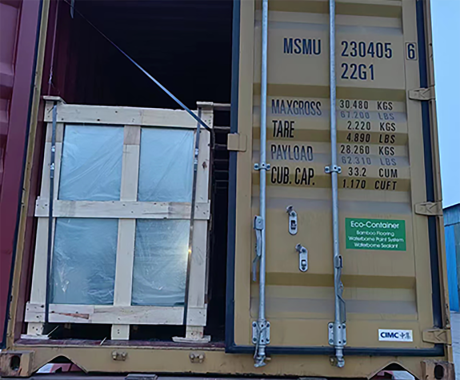

Understanding Low-E366 Glass Benefits and Applications
Low-E366 glass, or low emissivity glass with a specific emissivity rating, has become a prominent choice in modern architectural and building design due to its energy-efficient properties. The 'low-E' in its name stands for low emissivity, indicating that it has a special coating designed to reflect infrared radiation while allowing visible light to enter. The number '366' refers to the specific performance characteristics of the glass, particularly in managing solar energy and thermal insulation.
How Does Low-E366 Glass Work?
Low-E366 glass typically has a thin metallic coating that enhances its thermal performance. This coating reflects heat back into the building during the winter, helping maintain a comfortable indoor temperature while simultaneously reflecting excessive heat during the summer. As a result, Low-E366 glass contributes to an energy-efficient building design, reducing the demand for heating and cooling systems.
The unique properties of Low-E366 glass allow it to minimize the transfer of heat without significantly diminishing the amount of natural light that enters a space. This balance is critical in today’s world, where energy costs are escalating, and environmental concerns around building sustainability are growing. By harnessing the benefits of sunlight while minimizing heat loss, Low-E366 glass aids in reducing energy consumption and improving indoor comfort.
Benefits of Low-E366 Glass
1. Energy Efficiency One of the primary advantages of Low-E366 glass is its ability to reduce energy consumption in buildings. By reflecting heat back into the interior during colder months and blocking excessive sunlight during warmer months, it helps regulate climate control systems more efficiently, potentially leading to lower energy bills.
2. UV Protection Low-E366 glass also provides protection against harmful ultraviolet (UV) rays, which can cause fading in furniture, carpets, and artwork. By minimizing UV exposure, buildings can maintain their aesthetics and protect valuable belongings.

3. Increased Comfort Temperatures near windows can often be significantly different from those in the center of a room. Low-E366 glass helps to create a more uniform temperature in interiors by controlling heat loss and gain, leading to enhanced comfort for occupants.
4. Aesthetic Appeal Available in various tints, Low-E366 glass can be integrated seamlessly into architectural designs without compromising aesthetics. Builders and architects can utilize this glass to achieve desired visual appeal while enhancing the building's functionality.
Applications of Low-E366 Glass
Low-E366 glass is utilized in a variety of applications across both residential and commercial sectors. In residential settings, it is commonly used in windows, skylights, and sliding doors. These installations not only enhance energy efficiency but also contribute to the overall aesthetic of the home.
In commercial buildings, Low-E366 glass is increasingly favored for office buildings, retail spaces, and educational institutions. It plays a crucial role in achieving sustainability certifications, such as LEED (Leadership in Energy and Environmental Design), which evaluates a building’s environmental performance.
Conclusion
Low-E366 glass serves as a vital component in the quest for energy-efficient and sustainable building solutions. Its combination of thermal performance, UV protection, and design versatility makes it an excellent choice for architects and builders aiming to reduce energy consumption while providing comfortable and aesthetically pleasing environments. As the demand for sustainability grows, so too does the relevance of Low-E366 glass in modern construction practices. By integrating this innovative material, stakeholders can contribute to a more energy-efficient future without sacrificing comfort or style.